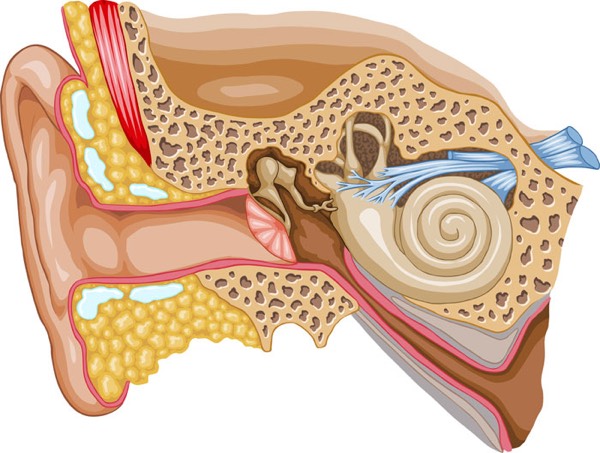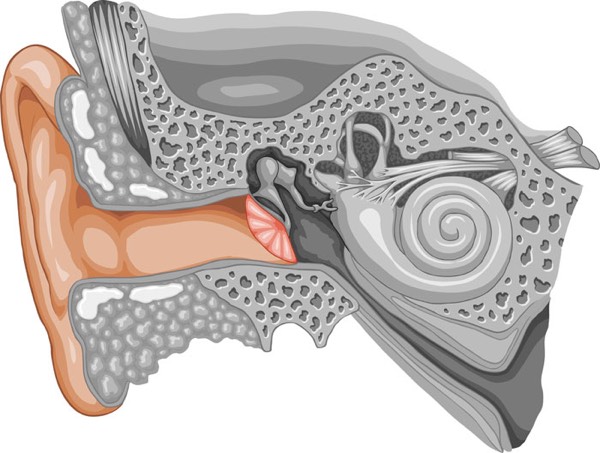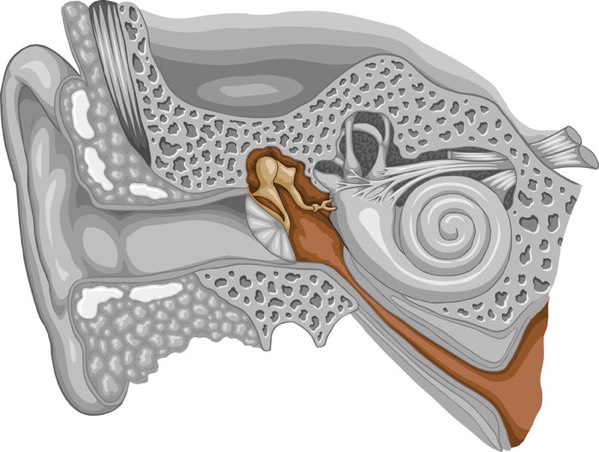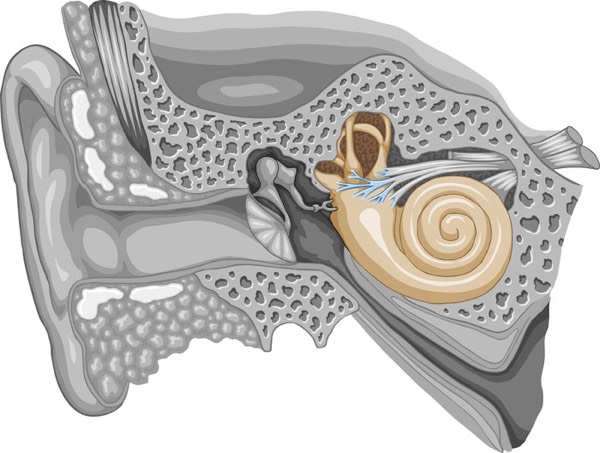Parts of the Ear and their Functions
The ear consists of three sections: the outer ear, middle ear and inner ear. Each plays an important role in hearing.
OUTER EAR FUNCTION
The outer ear is called the auricle or pinna. It is the external portion visible to others and is responsible for collecting sound waves and funneling them into the ear canal. There, they are amplified and sent to the eardrum, causing it to vibrate.
MIDDLE EAR FUNCTION
The middle ear consists of the auditory canal and tympanic membrane. When the eardrum vibrates, it stimulates movement of the ossicles, a trio of tiny bones.
INNER EAR FUNCTION
The inner ear contains the cochlea, a fluid-filled structure where vibrations transmitted from the eardrum cause hair cells to move. This movement is converted to electrical impulses that traverse up the auditory nerve to the brain. There, the brain interprets the electrical impulses as sound and the hearing process is complete.




When Should You Seek Treatment?
Acoustic Neuromas
An acoustic neuroma is a benign tumor of the cranial nerve that connects the inner ear and the brain. Though noncancerous and typically slow growing, it can affect both hearing and balance, and may cause hearing loss, tinnitus and dizziness. In rare cases, tumors may become large enough to press against the brain, interfering with…
Cholesteatoma
Cholesteatoma is an abnormal skin growth in the middle ear behind the eardrum that may also affect the mastoid (skull bone). It begins as a cyst that gradually increases in size, destroying the bones of the middle ear and causing hearing loss. What Causes Cholesteatoma? When the Eustachian tube is functioning normally, it equalizes ear pressure…
Dizziness & Vertigo
Dizziness, a blanket term used to describe any feeling of unsteadiness, is one of the leading health complaints in the United States, affecting an estimated nine million people annually. For those over the age of 70 it’s the top reason for a visit to the doctor’s office. What Are the Causes of Dizziness? Dizziness…
Eardrum Perforation
An eardrum perforation is defined as a hole or rupture in the eardrum. Known medically as a tympanic membrane rupture, this tear occurs in the membrane separating your outer ear from your inner ear. A perforation can lead to a middle ear infection and possible hearing loss, though in many cases it will heal on its own without medical treatment. The…
Ear Infection
Ear infections can occur in the outer or middle ear. An ear infection occurs in the middle ear when fluid becomes trapped following a viral or bacterial infection. This painful affliction is most common in children, but can affect people of all ages. Infections can also occur in the outer ear. They are most common when the skin in the…
Ear Tubes
If you’re a parent, it probably comes as no surprise that middle ear infections are common in children, particularly those between the ages of six months and two years. Known as otitis media, these are caused by a number of factors, both physical and environmental. Most ear infections clear up on their own, or are treated with antibiotics. But in some children,…
Earwax Removal
Earwax (cerumen) is a yellowish waxy substance produced by healthy ears. Earwax protects the ear from bacteria, water and foreign particles. It also assists in the cleaning and lubrication of the ear canal. Usually, excess wax is removed from the ear canal naturally. If a buildup does occur, the earwax will become hard and block…
Mastoid Surgery
In addition to pain and discomfort, a middle ear infection can cause tiny air cells in the mastoid bone to fill up with pus. As the infection spreads, potentially reaching the brain, the bone is destroyed, resulting in hearing loss. If antibiotics are unsuccessful in clearing up the infection, then mastoid surgery may be needed. …
Otosclerosis
Otosclerosis is an abnormal growth of bone in the middle ear that causes hearing loss. It typically begins in the early 20s, and is the leading cause of middle ear hearing loss in young adults. What Causes Otosclerosis? The exact cause of otosclerosis is not known, but evidence suggests a genetic link passed down from parent to…